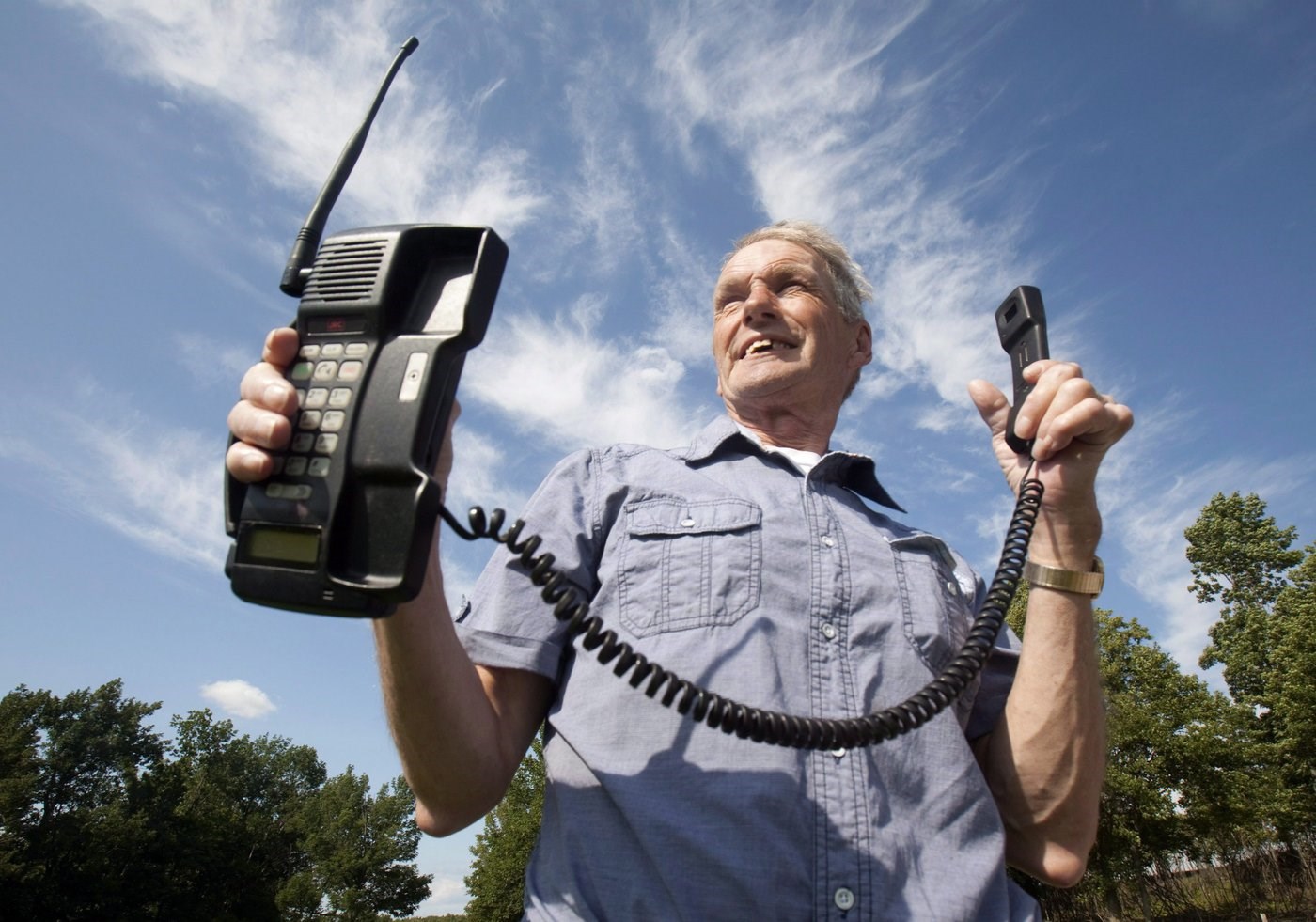
Victor Surerus poses for a photo at his farm in Roseneath, Ontario, on Wednesday, June 24, 2015 with the first cellphone in Canada. THE CANADIAN PRESS/Fred Thornhill
July 01, 2025 - 3:00 AM
MONTREAL — Pierre Robitaille remembers feeling embarrassed in 1985 when he made his cellphone calls from a bulky device that came with its own carrying case.
Now 86 years old, Robitaille was one of the first people in Canada to sign up for a wireless plan when they became available 40 years ago, on July 1, 1985.
As an electrician, Robitaille wanted a way to keep in touch with colleagues and clients while on the road at various construction sites. First came a car phone, then came the early hand-held versions, which included a mobile device and a suitcase in which to carry it.
"It wasn’t very heavy but it was embarrassing, it was big," Robitaille said of the mid-80s cellphone, in an interview from his home in the western Quebec town of St-André-Avellin.
The first wireless call in Canadian history took place 40 years ago on July 1, 1985, when then-Toronto mayor Art Eggleton used a 10-pound mobile phone to call his Montreal counterpart, Jean Drapeau.
Telecommunications company Rogers says that in the first month, mobile networksin Canada handled 100 calls per day. Today, that number has risen to 100 million calls, as well as 6.5 billion megabytes of data on the Rogers network alone.
Oakville, Ont., resident Peter Kent was another early mobile phone adopter — though the initiative came from his boss rather than himself. His car phone had to be installed professionally and cost around $3,500, he recalled in a recent interview.
At first, he was unsure if he should be thankful for the new connectivity. "I said, 'why are we doing this?' And then (my boss) said, 'well, when I want you, I want you.'"
Kent, however, soon started to enjoy his new phone. He recalls driving with his wife to his mother-in-law's home and making a call from her driveway.
"She said, 'where are you?' And I said, I'm in your driveway," Kent recalled. "She couldn't believe it. She ran to the door with her cordless phone and she could see me talking in the car."
Eric Smith, the senior vice-president for the Canadian Telecommunications Association, said the early commercial cellular services were limited to voice calling in select urban areas and involved "very large, bulky devices" with limited battery time. Users were charged by the minute.
"If you flash forward 40 years, people really have more than just the capability of calling, and they have a kind of a computer in their pocket," he said. Today, some 99 per cent of areas where people live and work in Canada have some form of mobile coverage, he said.
Smith said that initially, there was skepticism about whether cellular service would be widely embraced.
"It required a large investment by companies in a country that's very large geographically with a widely dispersed population," he said. "And some people thought that the companies who were investing in this were taking a very big risk."
Over time, the cellphones evolved from offering calls only, followed by text messaging, early internet connectivity and later a range of features from cameras to GPS. "It's hard to think of things you can't do on your mobile device," Smith said.
Smith says there are still hurdles that remain for Canadian telecommunications, including poor connectivity in rural areas and "regulatory challenges" that he says can discourage investment.
In recent years, there have been questions around cellphone use, especially among children. Several jurisdictions have banned phones in classrooms, while Quebec has gone a step further in prohibiting them on elementary and high school grounds.
Robitaille sees both the good and bad. He believes their widespread use among children is problematic because of the type of sensitive and vulgar content they have access to. On the other hand, as a senior who lives alone, his phone is an important tool to stay in touch with his friends and his children.
Kent, meanwhile, is convinced that cellphones have made life in Canada easier — despite the pressure to remain always connected — although he says he's happy he only got one as an adult.
Smith says the mobile industry is still evolving. Increasingly, connectivity is expanding beyond phones to other devices: everything from cars to appliances are connected to the internet, while internet-enabled sensors monitor conditions in the agriculture and mining industries.
He says it's hard to know what the future will be, as people continue to adopt different forms of technology, enabled by increased computing power and innovation.
"I'm excited to see what happens, but I don't think anyone really knows what it's going to look like 40 years from now," Smith said.
This report by The Canadian Press was first published July 1, 2025.
News from © The Canadian Press, 2025